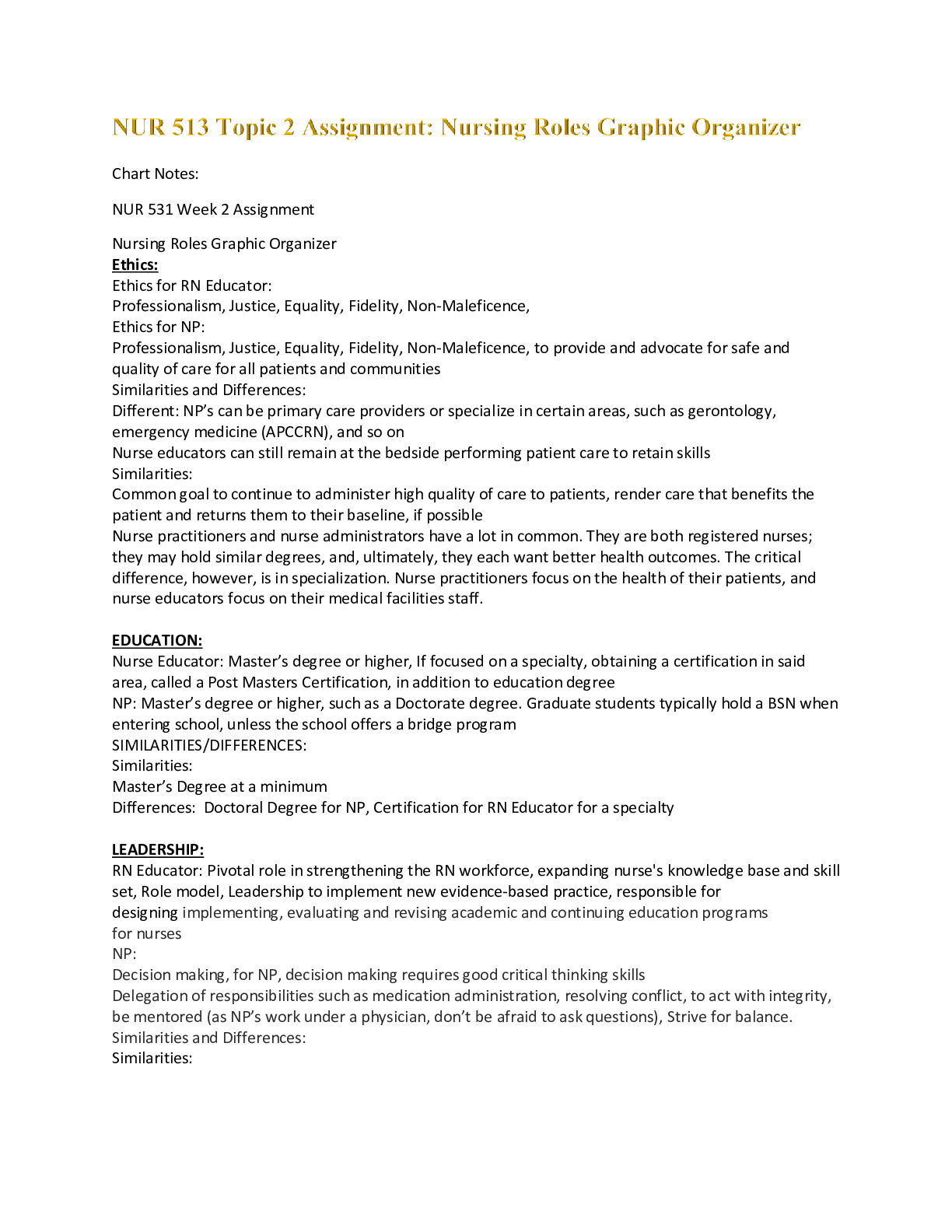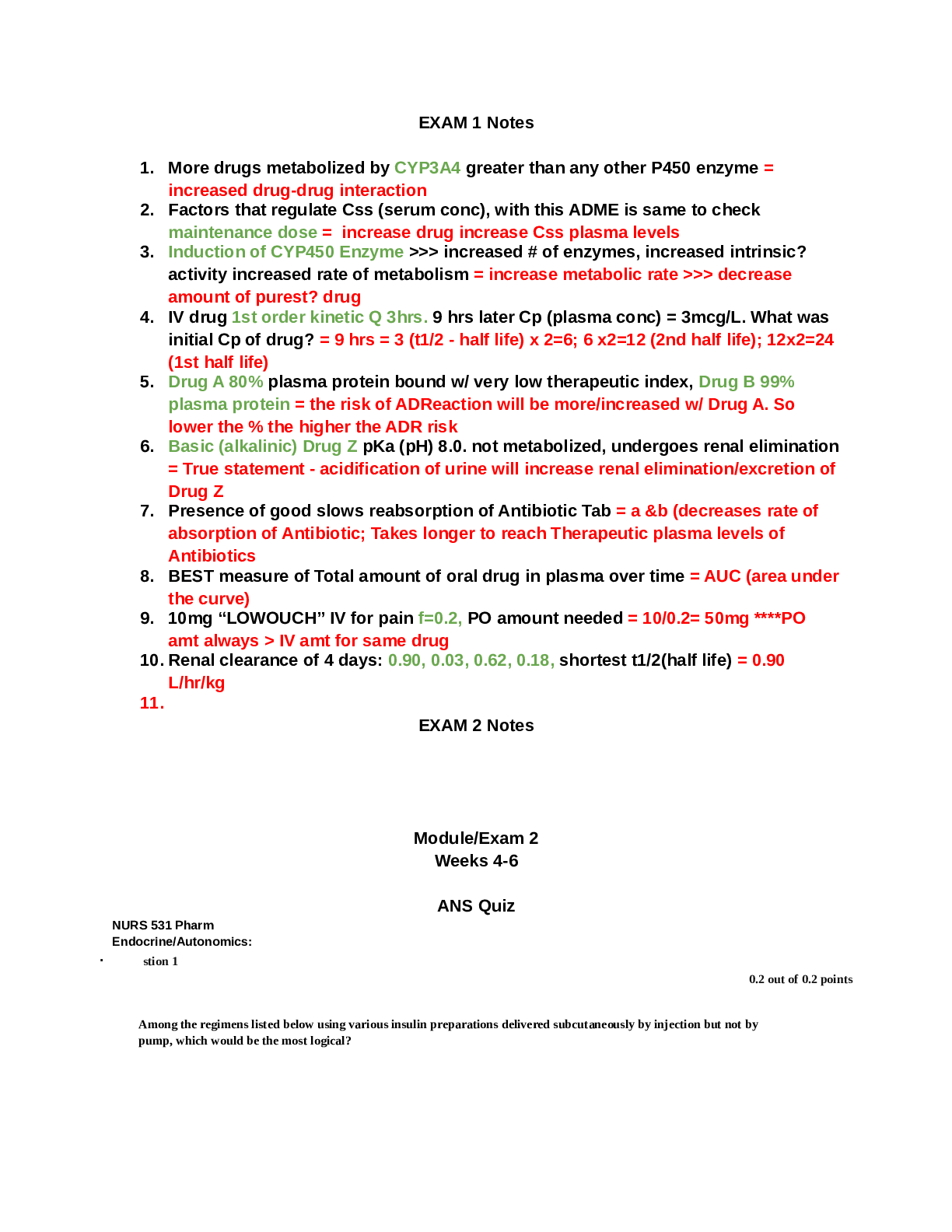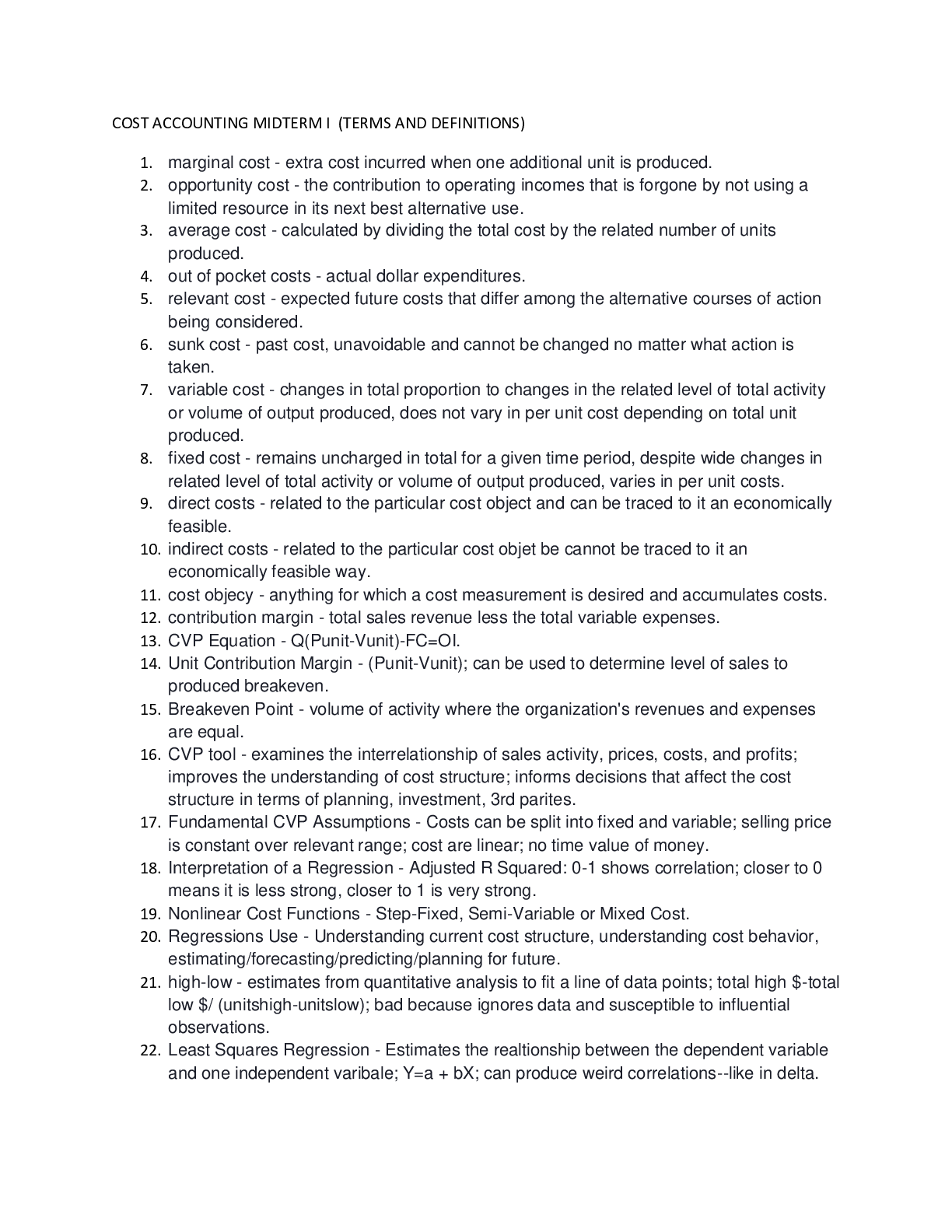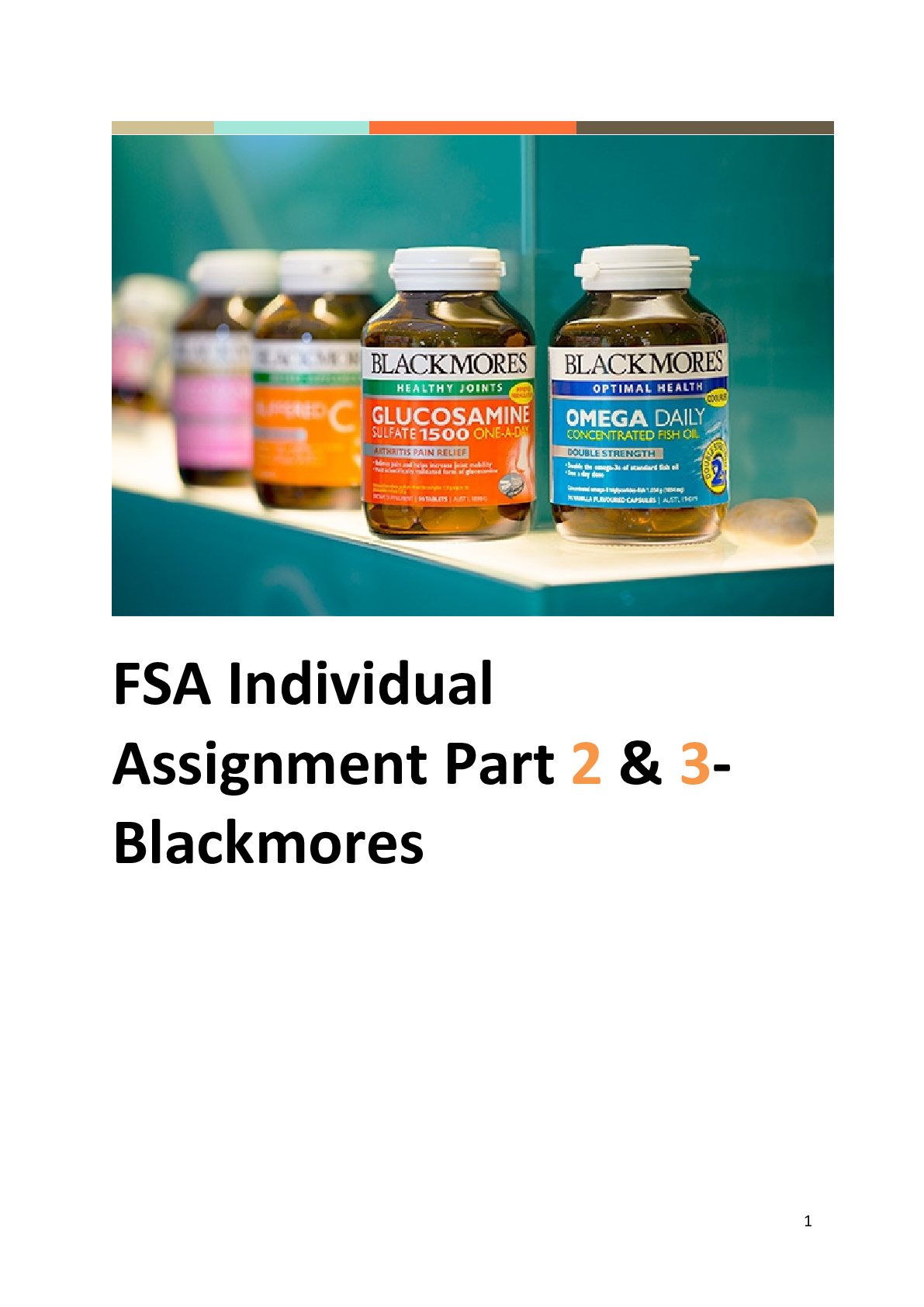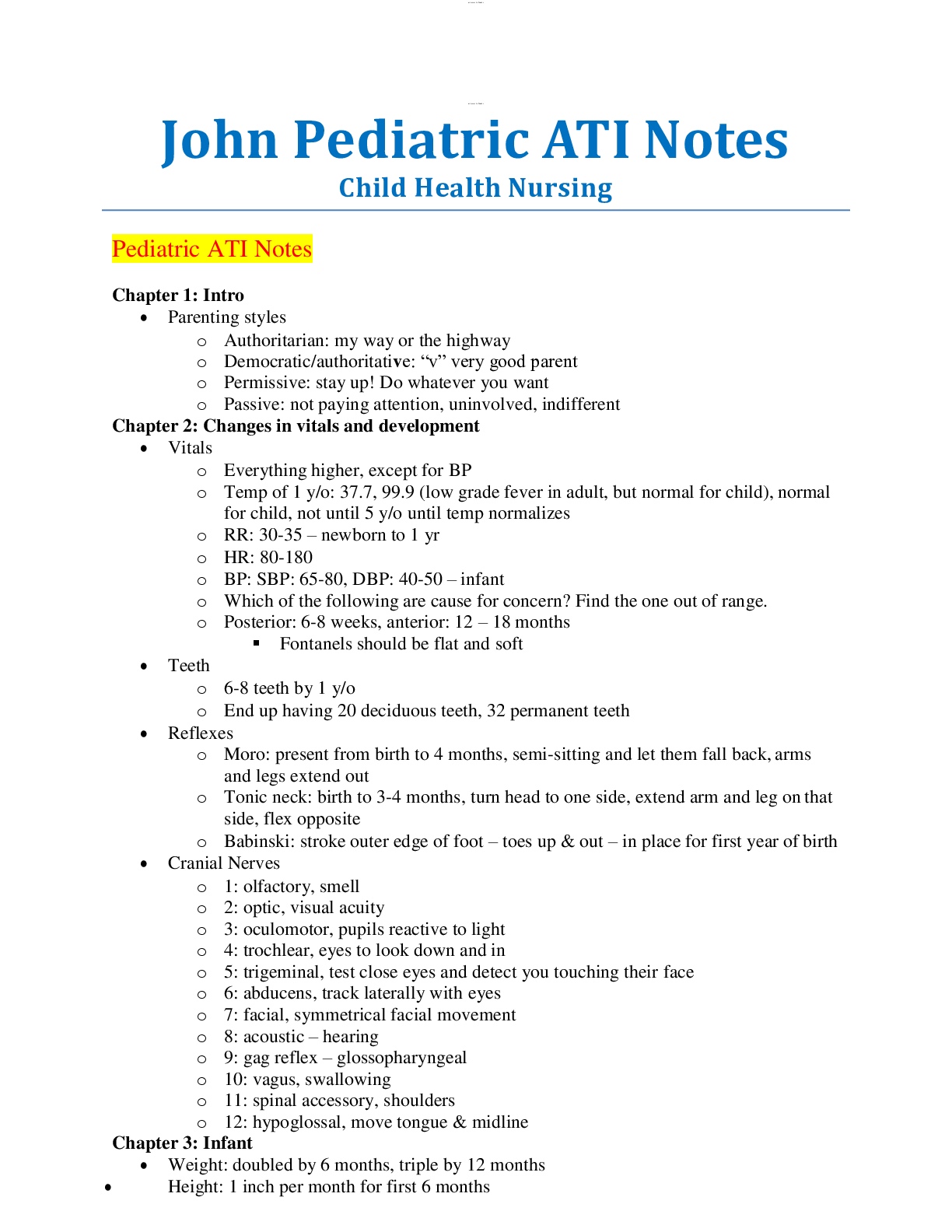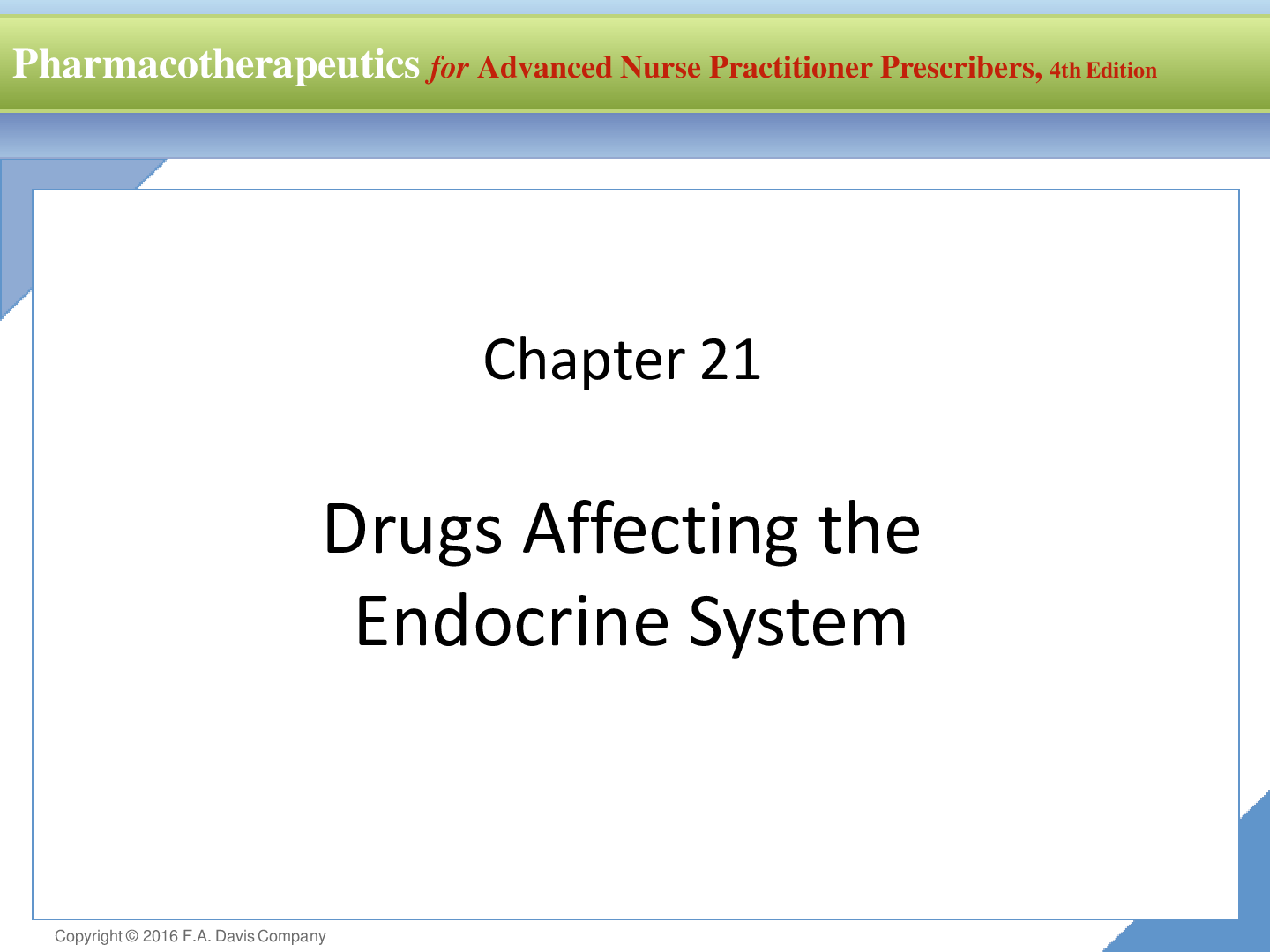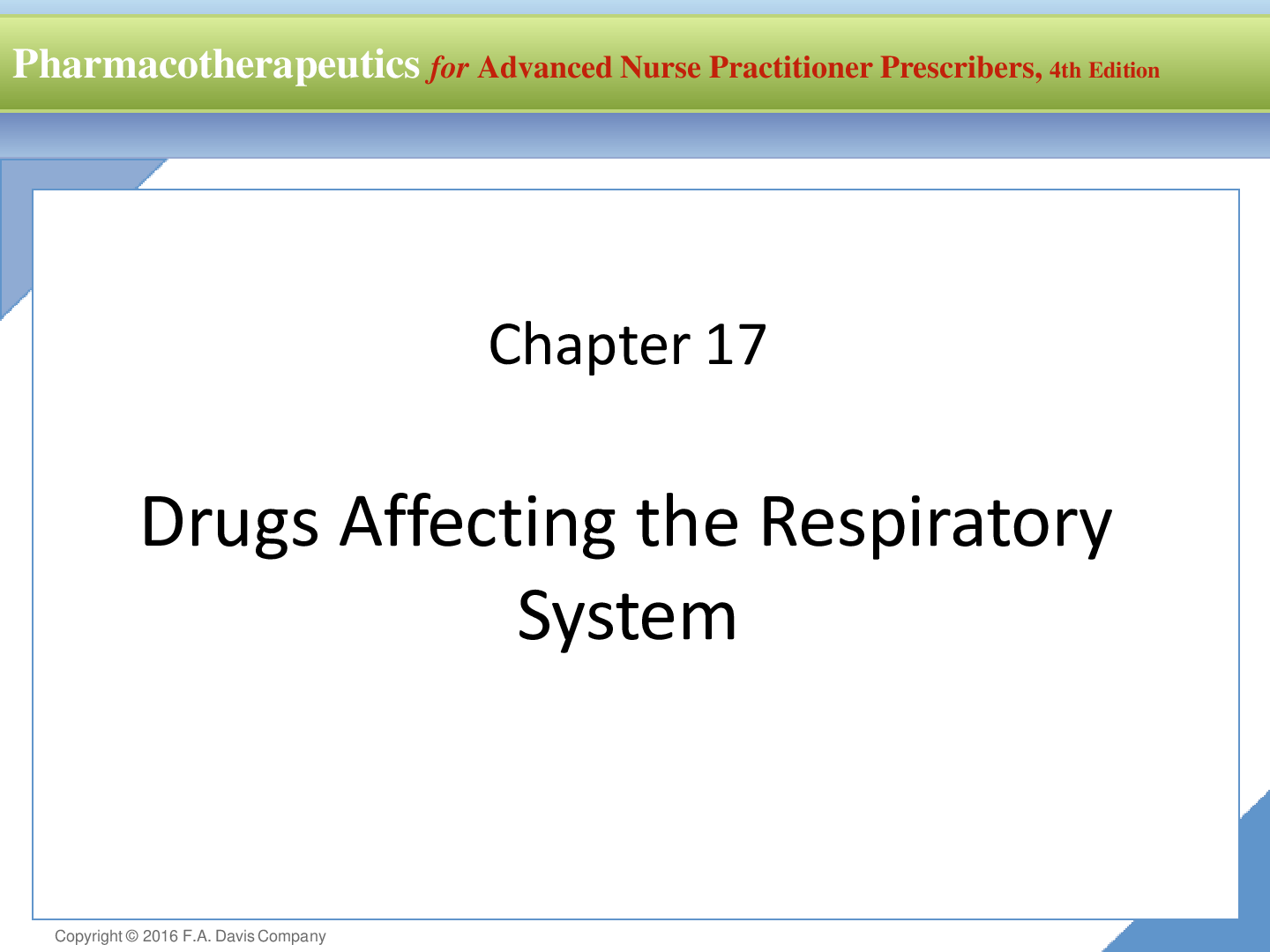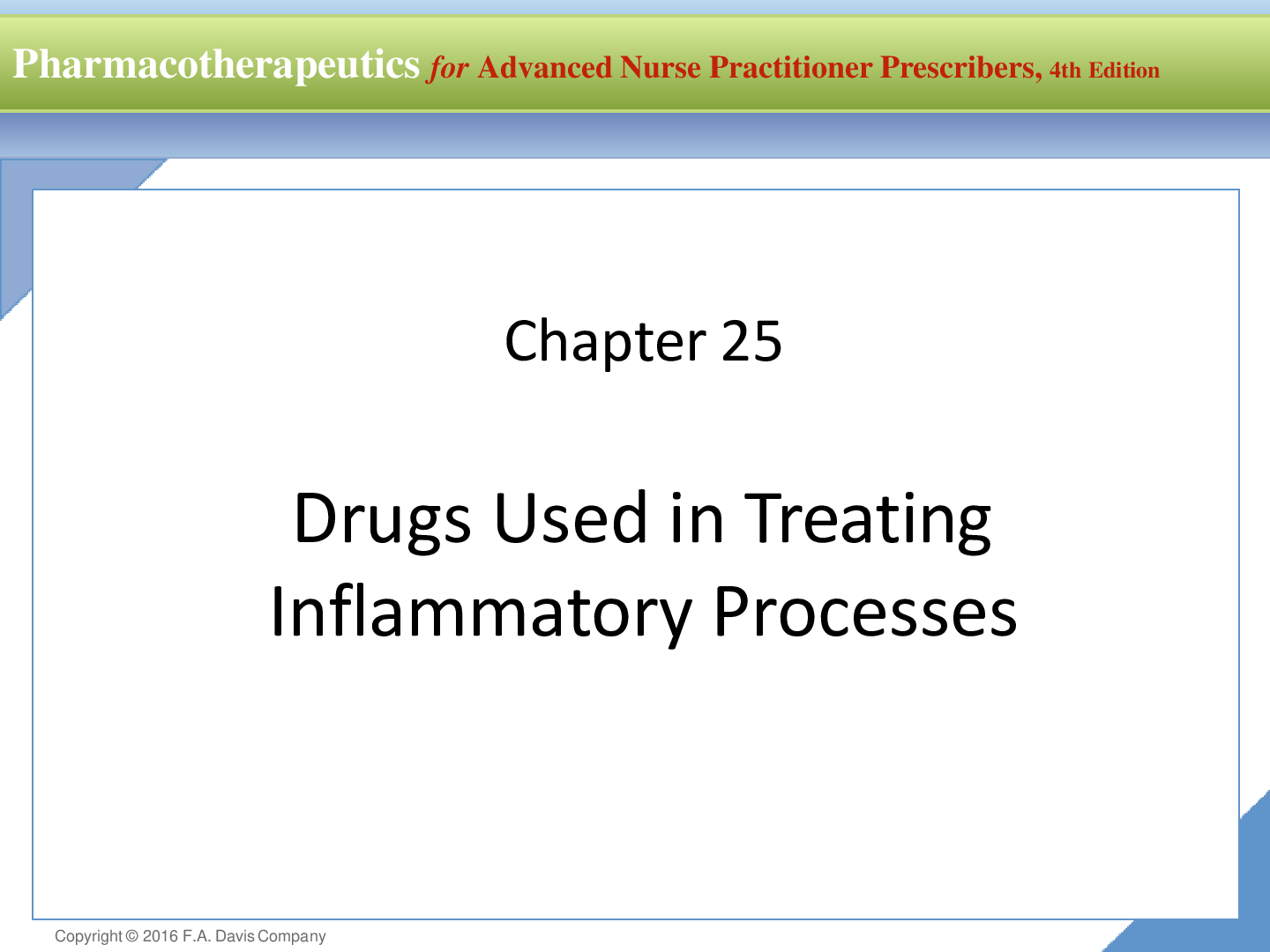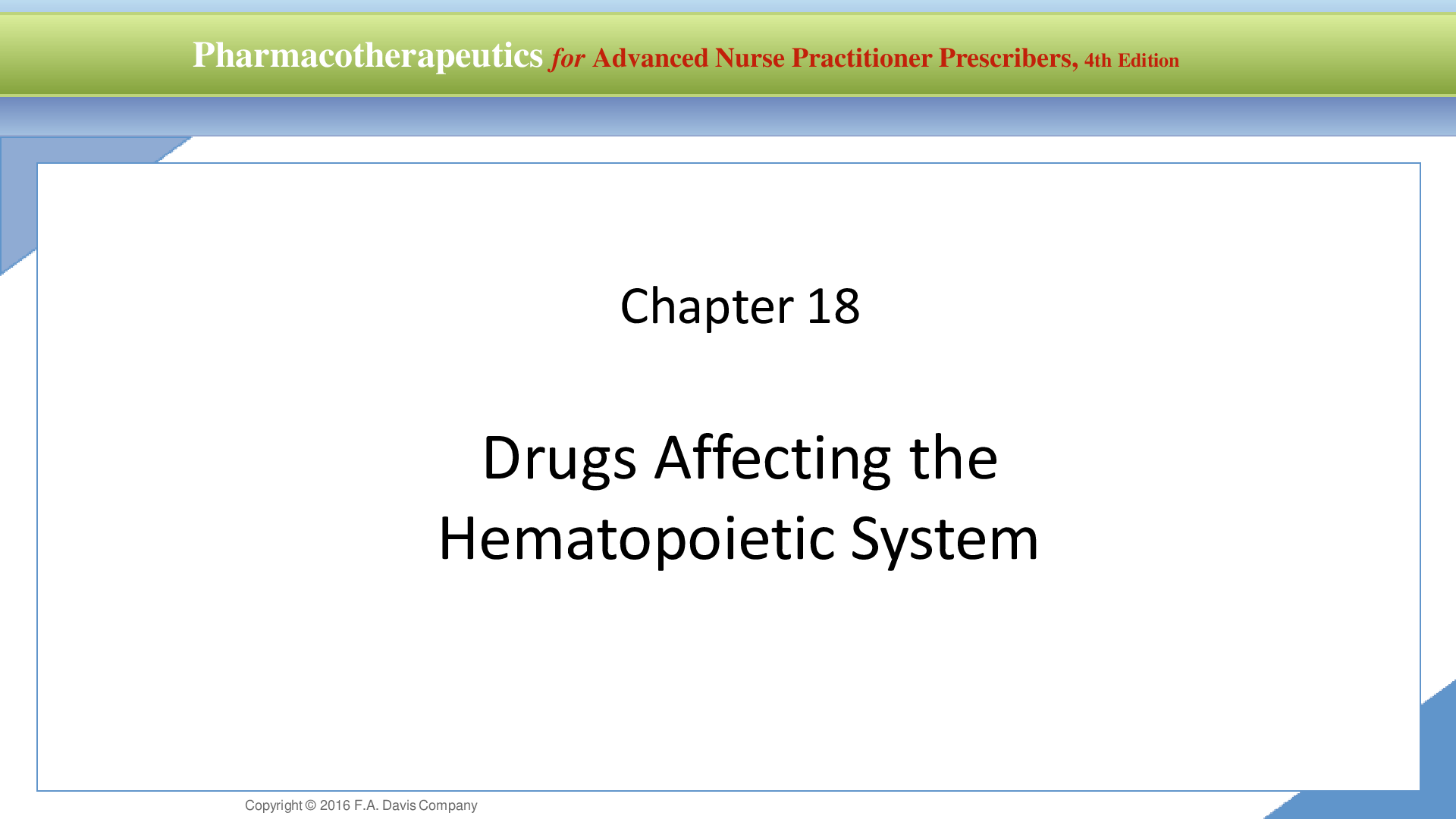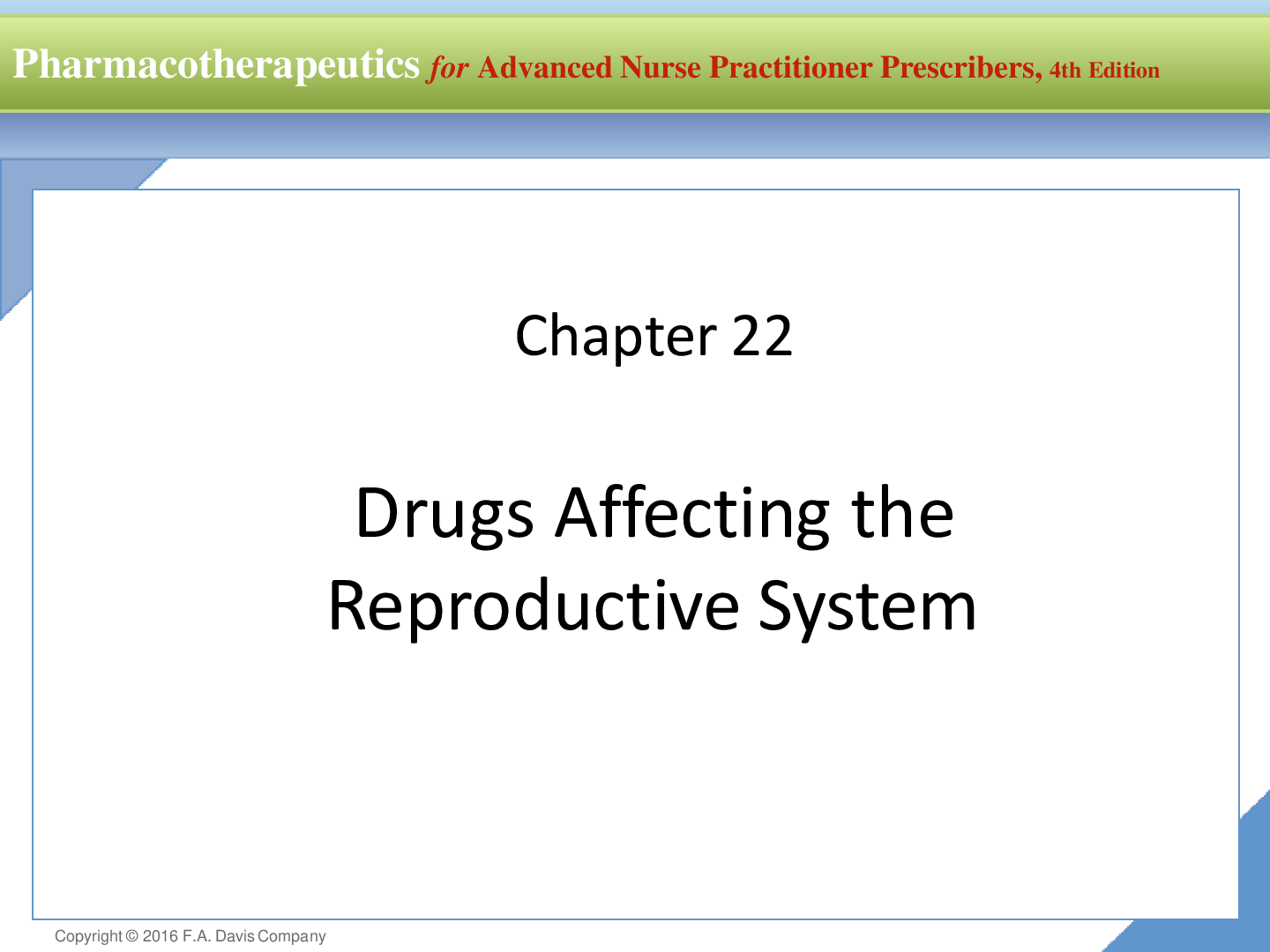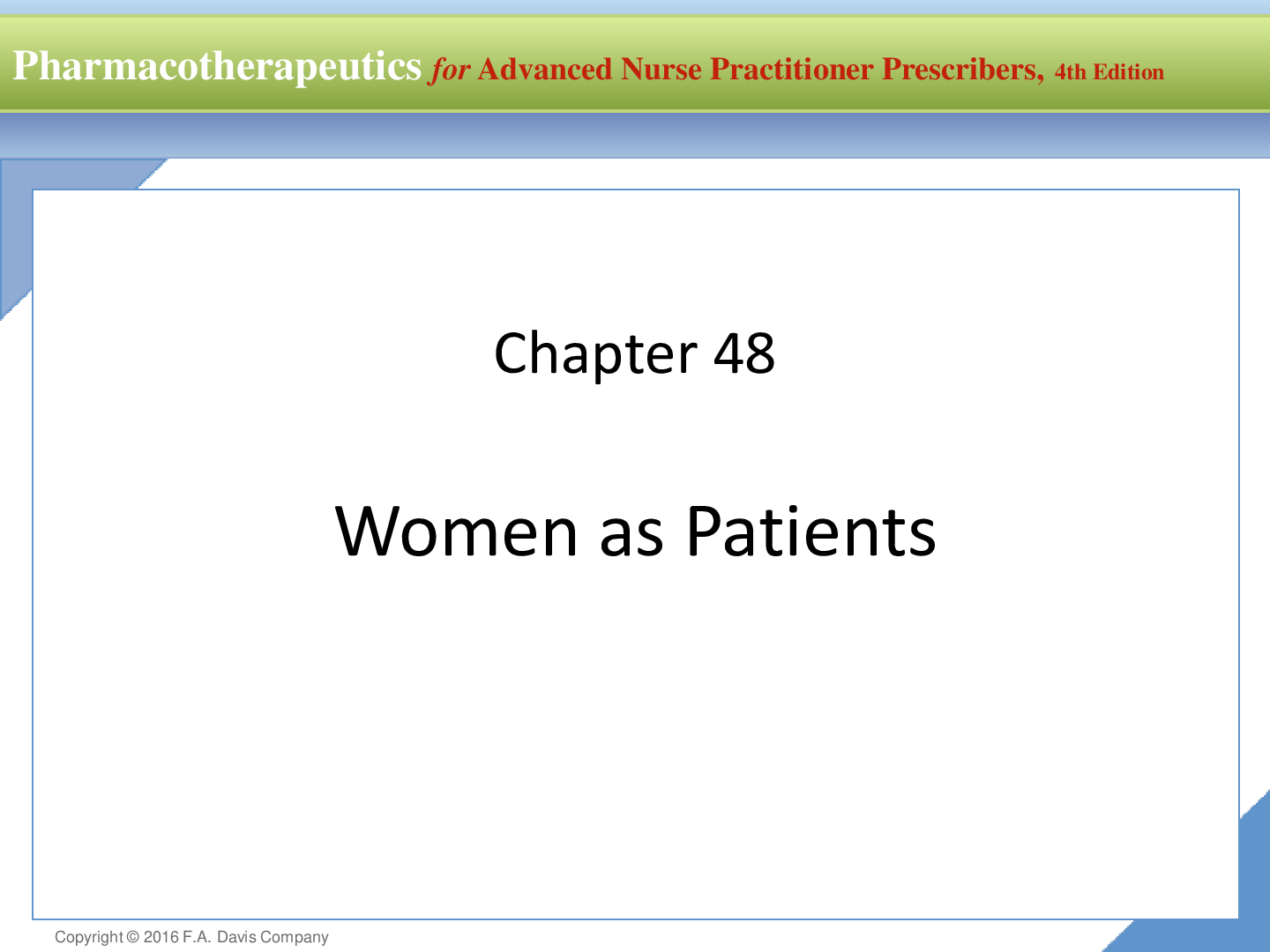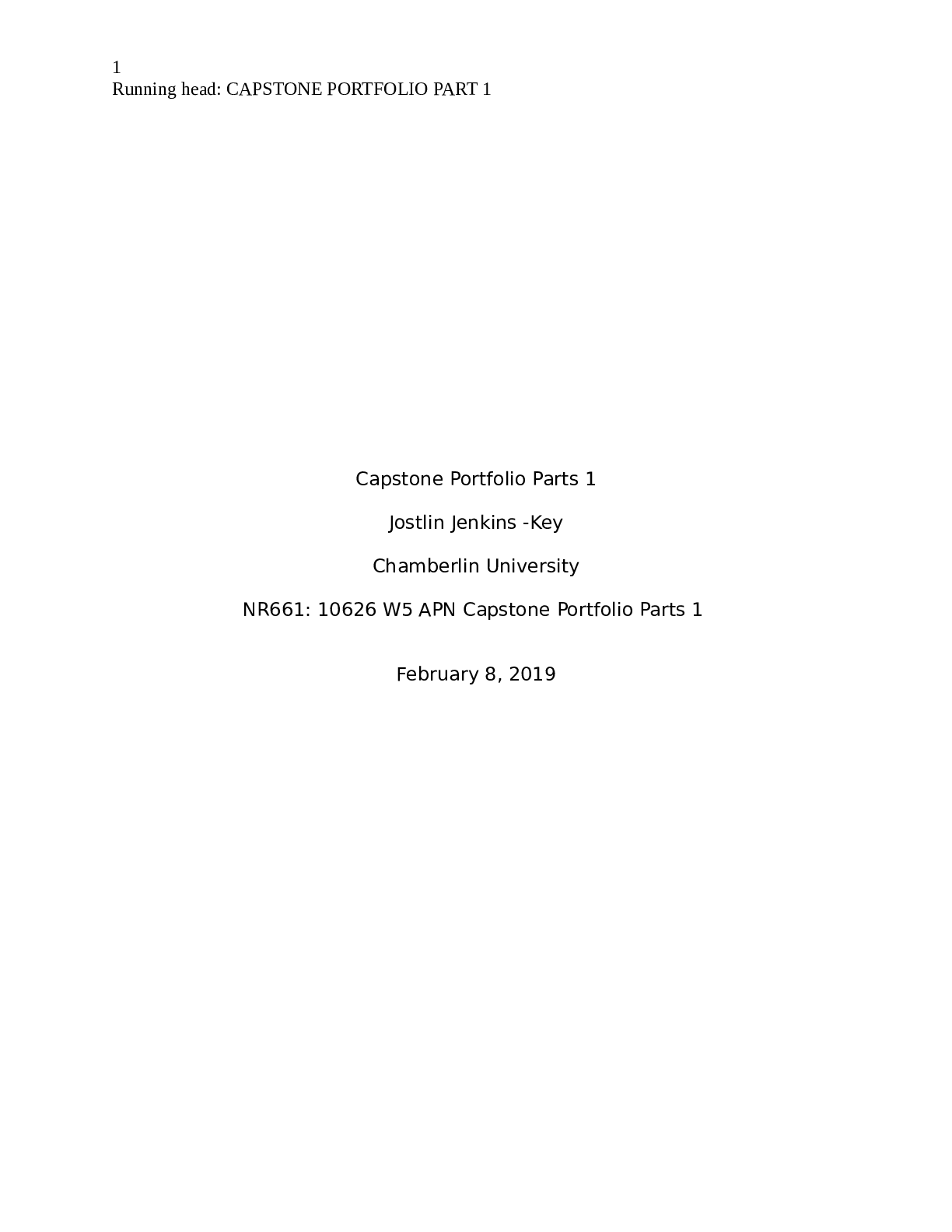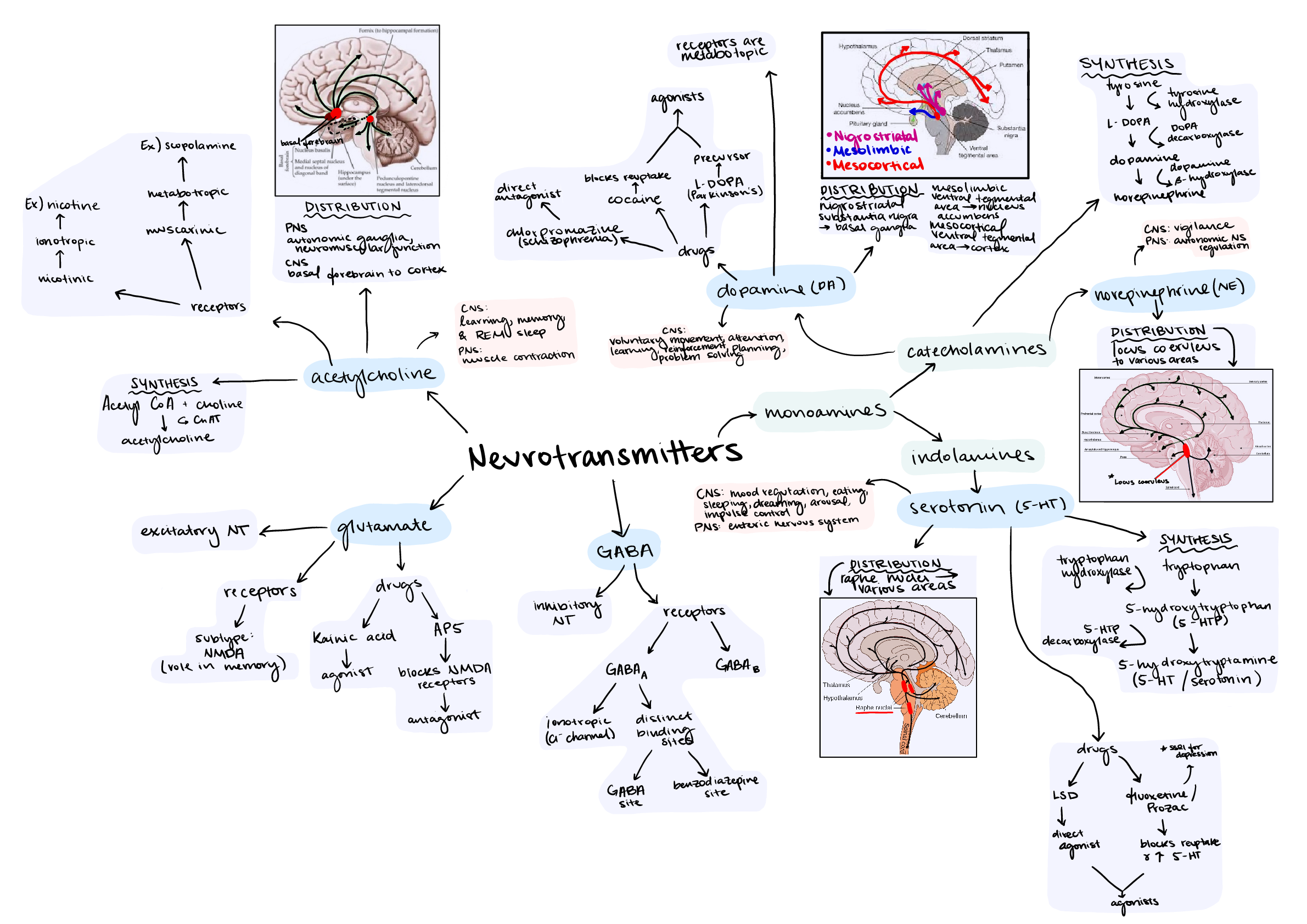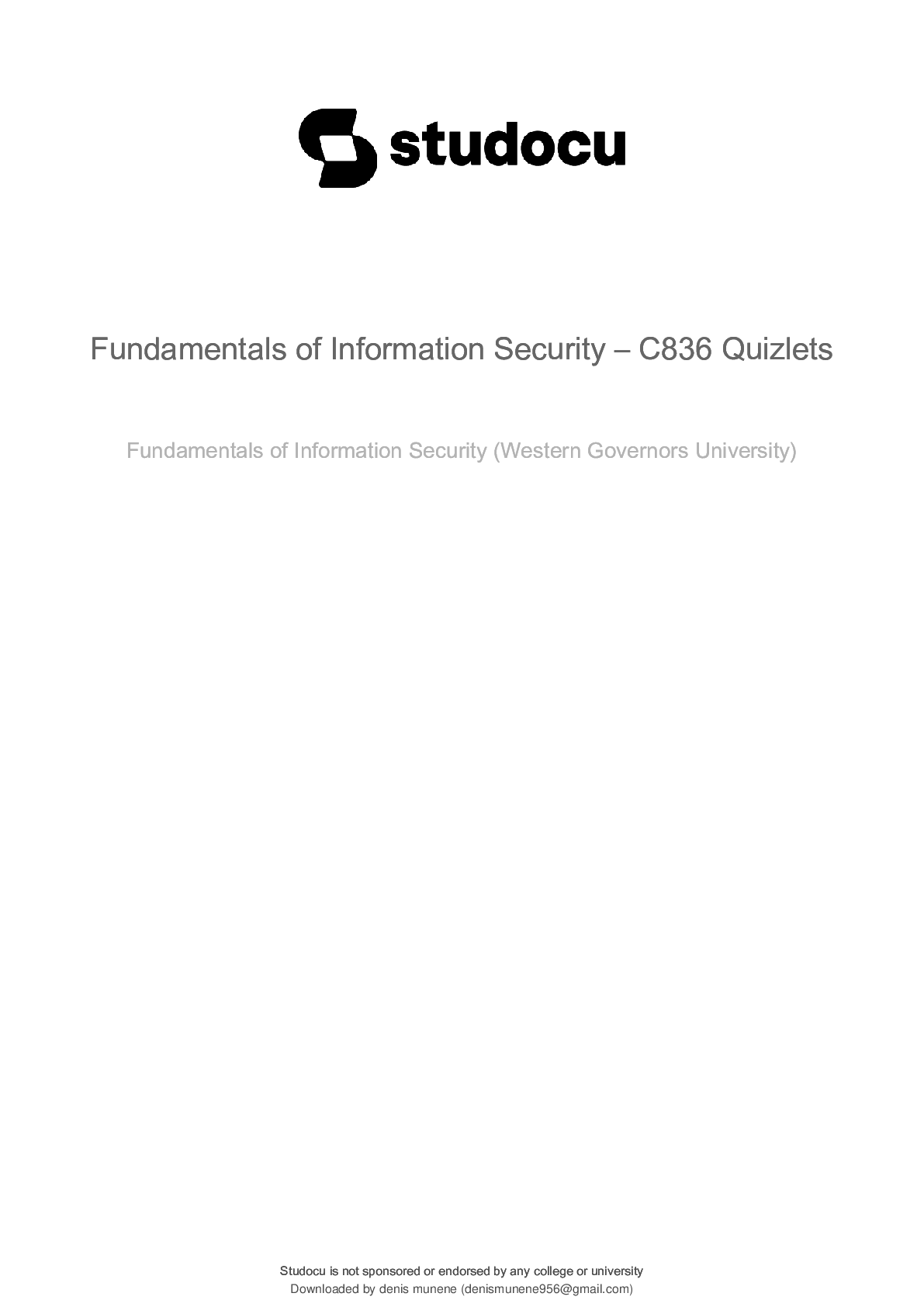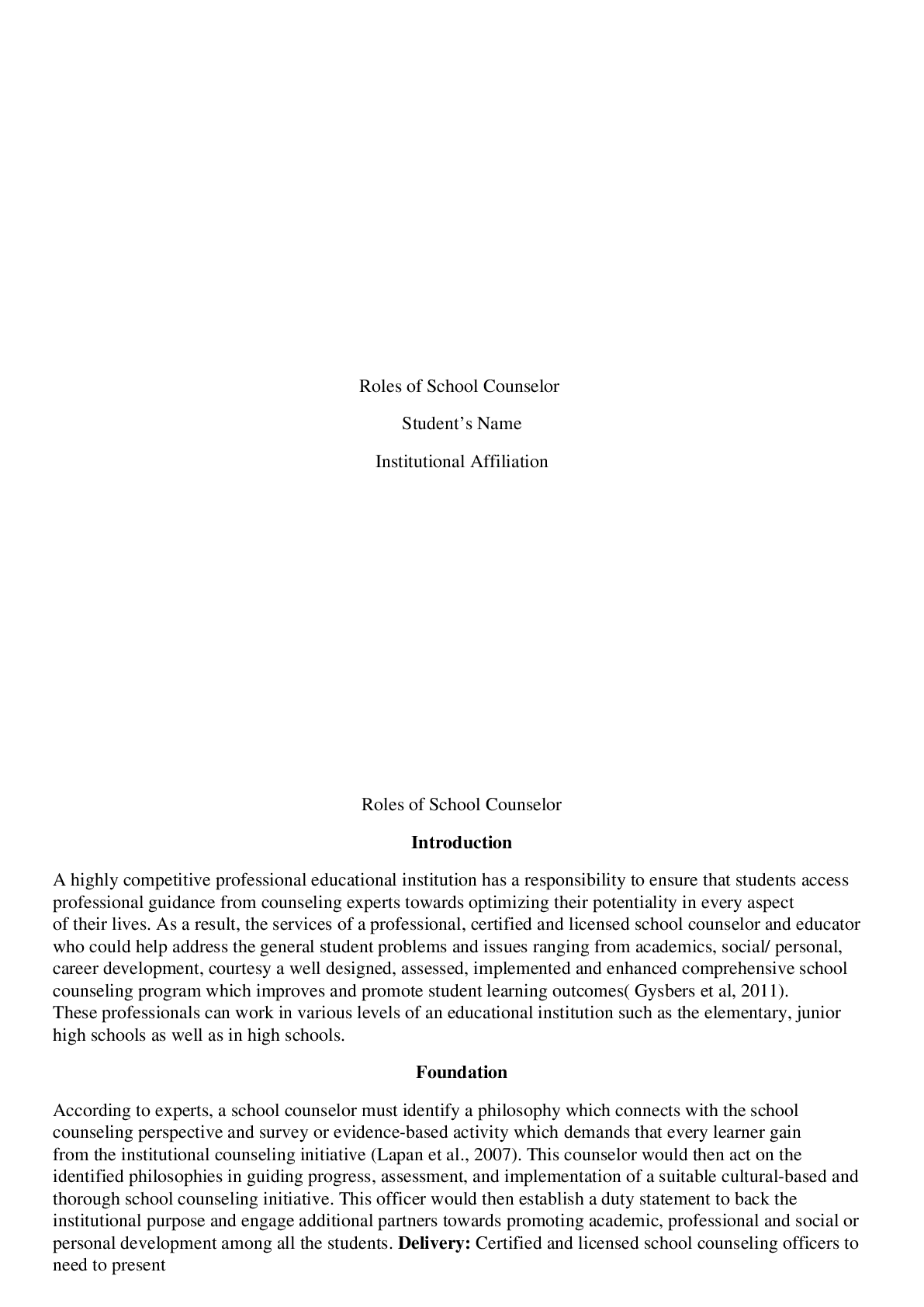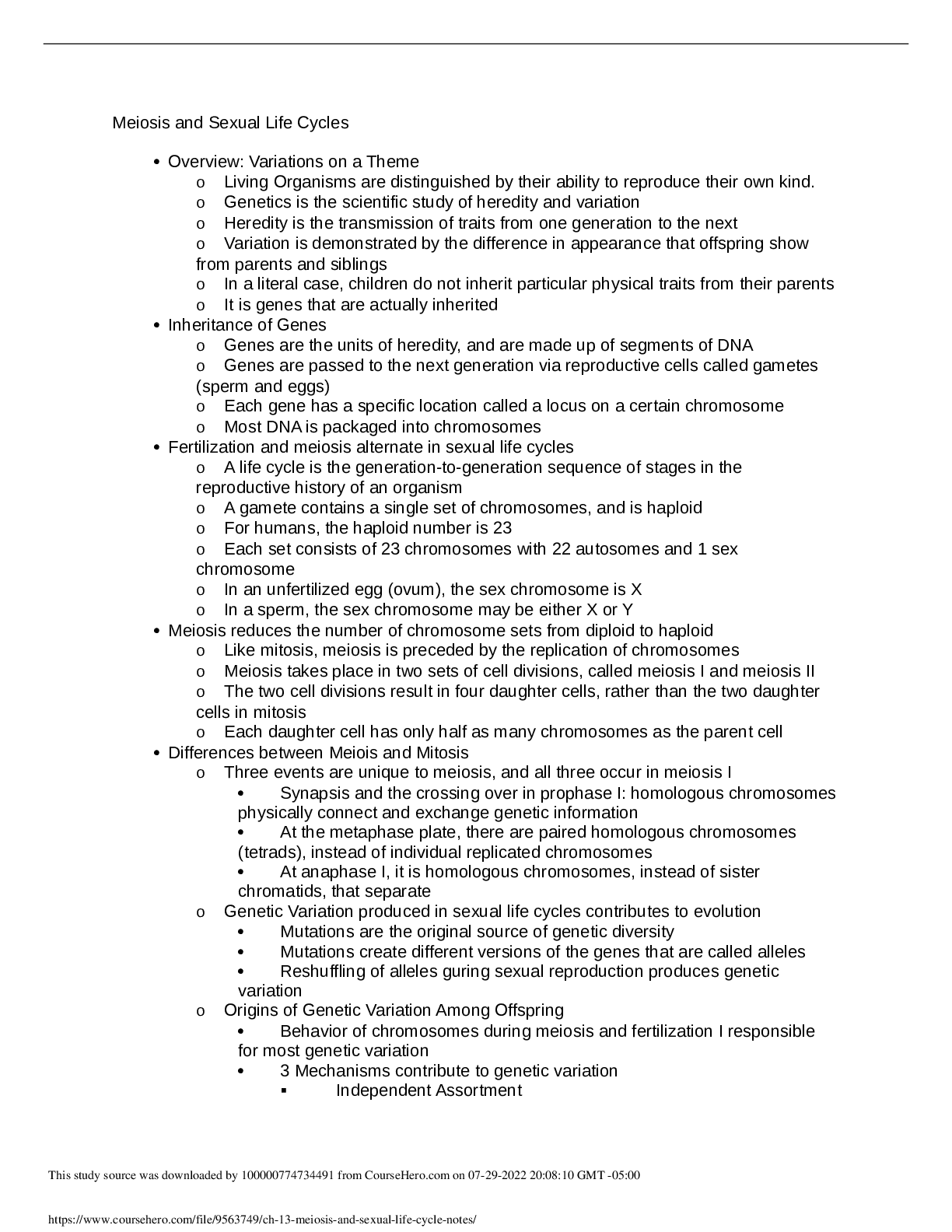*NURSING > Class Notes > NUR 2092 - Health Assessment Exam 1 Notes (All)
NUR 2092 - Health Assessment Exam 1 Notes
Document Content and Description Below
HEALTH ASSESSMENT EXAM 1 NOTES *** Chapter 4 – The Complete Health History *** Subjective databwhat the person says about himself or herself Objective databwhat you observe through measurement,... inspection, palpation, percussion, and auscultation The Health History –The Adult Record time & date of the interview 1. Biographic Data –includes name, address, phone number, age and birth date, birthplace, gender, marital partner status, race, ethnic origin, and occupation. • Record the person’s primary language Source of History • Record who furnishes the infobperson him/herself is most reliable but may be an interpreter or caseworker, relatives and friends are less reliable • Judge how reliable the informant seems • Note if the person seems well or ill • Sample statements: Patient herself, who seems reliable or Patients son, John Ramirez, who seems reliable, etc. 2. Reason for Seeking Care • Brief, spontaneous statement in the persons own words that describes reason for the visit • States one (maybe two) symptoms of signs & their duration • Symptom = subjective sensation that the person feels from the disorder • Sign= objective abnormality that you as the examiner could detect on a physical examination or in lab reports • Record persons exact words and record a time frame • Sample statements: “Chest pain for 2 hours” or “Sore throat for 3 days now and just getting worse” 3. Present Health or History of Present Illness • For healthy person – “I feel healthy right now” • For ill personbyour Snal summary of any symptom the person has should include these 8 characteristics: 1. LocationbspeciSc, ask person to point to the location. If pain is the problem, note the precise site (ex. head pain is vague, whereas pain behind the eyes or jaw pain is more precise. Is the pain localized to this site or radiation? Is it superScial or deep? 2. Character or QualitybspeciSc descriptive qualities (burning, sharp, dull, aching, shooting, etc.) Use similesbex. does blood in the stool look like sticky tar? 3. Quantity or Severitybtry to quantify the sign or symptom ex. profuse menstrual Zow soaking 5 pads/hr. With pain, avoid adjectives and ask how it a]ects daily activities. Record if person says something like “I was able to go to work but then I came home and went to bed” (Also use Pain scale 1-10) 4. Timingb(onset, duration, frequency) when did the symptom Srst appear? Report must include answers to Q’s such as: • how long did the symptom last (duration)? • Was it steady (constant) or did it come and go during that time (intermittent)? • Did it resolve completely and reappear days or weeks later (cycle of remission and exacerbation)? 5. Settingbwhere was person or what were they doing when the symptom started? What brings it on? 6. Aggravating or Relieving Factorsbwhat makes pain worse? Is it aggravated by weather, activity, food, medication, standing bent over, fatigue, time of day, or season? What relieves it (rest, medication, ice pack)? Ask what they have tried or what seems to help? 7. Associated Factorsbis primary symptom associated with any others (ex. urinary frequency and burning associated w/ fever and chills) 8. Patients PerceptionbSnd out the meaning of the symptom by asking how it a]ects daily activities • Organize question sequence into: PQRSTU • P Provocative or Palliative – what brings it on? What were you doing during onset? What makes it better/worse? • Q Quality or Quantity – how does it look, feel, sound? How intense/severe is it? • R Region or Radiation – Where is it? Does it spread? • S Severity Scale – How bad is it (on scale 1-10)? Getting better, worse, staying the same? • T Timing – onset (when did it Srst occur), duration (how long did it last), and frequency (how often does it occur) • U Understand Patient’s Perception of the problem (“what do you think it means?”) 4. Past Health • Childhood illnesses • Accidents or Injuries • Serious or chronic illnesses • Hospitalizations • Operations • Obstetric history • Immunizations • Last examination date • Allergies • Current medications 5. Family History • Accurate family history can help with prevention (patient may seek early screening and periodic surveillance) • Pedigree/genogram—graphic family tree Review of Systems • General overall health state – weight (gain/loss over what period of time), fatigue, weakness or malaise, fever, chills, sweats or night sweats • Skinbhistory of skin disease, pigment or color change, excessive dryness or moisture, excessive bruising, rash, lesion • Hairbrecent loss or change in texture (nails: change in shape, color, or brittleness) • Headbunusually frequent or severe headache; head injury, dizziness or vertigo • Eyesbdihculty with vision, eye pain, redness or swelling, watering or discharge • Earsbearaches, infections, discharge, tinnitus, vertigo • Nose and sinusesbdischarge and its char. Sinus pain, nosebleeds, change in sense of smell • Mouth and throatbmouth pain, frequent sore throat, bleeding gums, toothache, lesion in mouth or tongue, hoarseness or voice change, altered taste • Neckbpain, limited motion, lumps or swelling, enlarged or tender nodes, goiter • Breastbpain, lump, nipple discharge, history of breast disease, surgeries done • Axillabtenderness, lump, swelling or rash • Respiratory system –history of lung disease, chest pain while breathing, wheezy or noisy breathing, shortness of breath, cough, sputum • Cardiovascularbchest pain, pressure, tightness or fullness, palpitation, cyanosis, dyspnea or exertion, etc. specify amount of exertion ex. walking one Zight of stairs, walking from chair to bath, or just talking • Peripheral vascularbcoldness, numbness and tingling, swelling of legs (time of day and activity), discoloration of hands or feet, varicose veins, ulcers • Gastrointestinalbappetite, heartburn, indigestion, pain (assoc. with eating), other ab pain, nausea and vomiting, vomiting blood, black stools, rectal bleeding, frequency of bowel movement, Zatulence • Urinary systembfrequency, urgency, nocturia (# of times person wakes up to pee at night, recent change), dysuria, polyuria, UTI, kidney stones • Male genital systembpenis or testicular pain, sores/lesions, penile discharge, lumps, hernia • Female genital systembmenstrual history, vaginal itching, discharge and char, age at menopause, menopausal signs and symptoms, postmenopausal bleeding • Sexual healthb“I usually ask all patients about their sexual health”bthen: “are you presently in a relationship involving intercourse?” contraceptives? STIs? • Musculoskeletal systembhistory of arthritis or gout. In joints: pain sti]ness, swelling (location, migratory nature, deformity, limitation of motion, noise with joint motion? In muscles: pain, cramps, weakness, gait problems, coordination problems? In the back: any pain, sti]ness, limitation of motion, history of back pain or disk disease? • Neurologic Systembhistory of seizure disorder, stroke, fainting, blackouts. Motor function: weakness, paralysis, coordination problems? Sensory function: numbness, tingling? Cognitive function: memory disorder (recent or distant, disorientation?), mental status: nervousness, mood change, depression, hallucinations, etc • Hematologic Systembbleeding tendency of skin or mucous membranes, excessive bruising, lymph node swelling, blood transfusion and reactions • Endocrine systembhistory of diabetes or thyroid disease, excessive sweating, relationship b/w weight and appetite, abnormal hair distribution, tremors, nervousness, need for hormone therapy Functional Assessment (including Activities of Daily Living) • Measures a person’s self-care abilities in the areas of general physical health or absence of illness. • Self esteem/concept: education, Snancial status, value-belief system (religious) • Activity/exercise: a daily proSle reZecting usual daily activities (note ability to perform ADLs) • Sleep/rest: sleep patterns, day naps, any sleep aids used? • Nutrition/elimination: record diet by recall of all food + bev taken over the past 24 hours. Ask about usual bowel movement pattern and urination • Interpersonal relationships/resources: social rolesbask how they describe their role in family • Spiritual resources • Coping and stress management • Personal habitsbtobacco, alcohol, street drugs. Smoker? How many packs? • Alcoholbask about amount and frequency of intake? (CAGE test) • Illicit or street drugs: ask about prescription pain killers, cocaine, heroine, marijuana, crack. • Intimate partner violence • Occupational health: ask person to describe work place Perception of Health • Ask the person to deSne health for you and how they view their situation now. Ask if they have any concerns or goals Chapter 8 – Physical Assessment in Clinical Setting -Physical examination requires examiner to develop technical skills = the tools to gather data -Use your senses to gather data -The skills required for the physical examination are: 1. INSPECTION o Close/careful scrutiny – Srst of an individual as a whole and then of each body system o Inspection always comes FIRST o Compare the client’s R & L sides (symmetry) o Begins the moment you Srst meet the person and develop a “general survey” o pay attention to their aZect (their temperament, mood), how their dressed, hygiene, etc. o observe for: symmetry, norms, size, shape, color, & behavior o general inspection – front to back/ side to side, symmetry, injuries, abnormalities (overall appearance) o systemic inspection – each body system from head to toe o inspection requires: good lighting, adequate exposure, occasional use of instruments (including otoscope, ophthalmoscope, penlight, or nasal and vaginal specula) to enlarge your view 2. PALPATION o Often conSrms points you made during inspection o sense of TOUCH to asses: texture, temperature, moisture, organ location and size, swelling, vibration or pulsation, rigidity or spasticity, crepitation, presence of lumps or masses, and presence of tenderness or pain o Di]erent parts of the hand are best suited for assessing di]erent factors: ❖ Fingertips –best for Sne tactile discrimination, as of skin texture, swelling, pulsation, and determining presence of lumps ❖ Grasping action of the ]ngers and thumb – to detect the position, shape, and consistency of an organ or mass ❖ The dorsa (backs) of hands and ]ngers—best for determining temperature b/c the skin here is thinner than on the palms ❖ Base of ]ngers or ulnar surface of hand – best for vibration o Bimanual palpation – requires use of both hands to envelop or capture certain body parts or organs such as kidneys, uterus, or adnexa for more precise delimitation o Skin, organs, glands, vessels, thorax o Light palpation – rigidity, tenderness, masses o Deep palpation – enlarged organ, tenderness, masses o Bimanual palpation – size, tenderness o Use back of the hand for TEMP o Always do non-tender areas ]rst before painful areas** 3. PERCUSSION o Tapping the person’s skin with short, sharp, strokes to assess underlying structures o Produces audible vibration that helps reveal: location, density, and size of underlying tissue o 2 METHODS: o 1. Direct percussion – or “immediate”, the striking hand directly contacts body wall (ex. sinus tenderness) o 2. Indirect percussion – or “mediate”, using both hands, the striking hand contacts stationary hand Sxed on person’s skin (ex. lung percussion) o *PERCUSSION NOTE CHARACTERISTICS: ❖ Resonant – low-pitched (hollow) ex. air-Slled lungs, normal lung tissue ❖ Hyper-resonant – loud/booming normal over a child’s lung, ABNORMAL in adult hyper-inZated lung with increased amount of air as in emphysema (someone with COPD that has huge lungs would be considered hyperresonant sound) ❖ Tympany – high pitched/drum-like ex. stomach (air-Slled stomach) ❖ Dullbsoft- high-pitched, thud-like ex. dense organs (heart, liver, spleen) ❖ Flat – a dead stop of sound, absolute dullness. When no air is present ex. over thigh muscles, bone, or tumor 4. AUSCULTATION o LISTENING to sounds produced by the body (ex. heart and blood vessels, lungs, abdomen) o Most body sounds are very soft and must be channeled through a stethoscope o For high pitched sounds – use the diaphragm (lung sounds, normal heart sounds, bowel sounds) o For low pitched sounds – use the bell (remember: “bel-low”) ex. extra heart sounds or murmurs, blood vessels, gallops o Never listen through clothes o Pitch- tone, frequency o Intensity- loud or soft o Duration- short, medium, long o Quality- blowing or gurgling ORDER OF ASSESSMENT TECHNIQUES: Inspect/ Palpate/Percuss/Auscultate ** ABDOMINAL ASSESSMENT ORDER: Inspect/Auscultate/Percussion/Palpation CH. 9 – GENERAL SURVEY, VITAL SIGNS, PAIN Acute Assessment o Indicators of an acute situation: • Extreme anxiety, Acute distress, Pallor • Cyanosis, Change in mental status o Interventions begin will continuing the assessment o Normal BP: 120/80 o Normal Oral Temp (resting person): 98.6 (with a range of 96.4-99.1) • Rectal/temporal artery measurements are 1 degree higher • Axillary temp. measurements are 1 degree lower o Normal resting HR: 60-100 bpm o Adult respiratory rate: 10-20 breaths/min o Normal pulse oximetry is SpO2 from 92% to 100% • SpO2 of 85% to 89% acceptable for patients with certain chronic conditions such as emphysema o Rapid response team may be called for: • An acute change in mental status • Stridor (a harsh vibrating noise when breathing, caused by obstruction of the windpipe or larynx) • Respirations - less than 10 or > 32 breaths /min • Increased e]ort to breath • Oxygen saturation- < 92% • Pulse- < 55 beats/min or > 120 beats/min • Systolic BP- < 100 or > 170 • Temperature- < 35°C or > 39.5°C • New onset of chest pain • Agitation or restlessness General Survey o First component of the assessment o Forms global impression of person broad idea, gives general idea o *know diZ information you get from light vs. deep palpation o light palpation – giving you a general idea (would give you a global impression) o deep palpation o ASSESS: overall appearance, hygiene and dress, skin color, body structure and development, behavior, facial expression, level of consciousness, speech (normal, slow, monotone?), mobility o ANTHROPOMETRIC MEASUREMENTS: height, weight, BMI o VITAL SIGNS: reZect health status, cardiopulmonary fxn, overall body fxn, need to assess patient medications Srst, frequency, baseline o TEMPERATURE: normal range depends on route used o PULSE: arterial pulse points o Rate – normal pulse rate = 60-100 beats/min, (less than 50 = bradycardia, over 100 = tachycardia) o Rhythm – pulse normally has a regular, even tempo o RESPIRATIONS: “eupnea” = normal respiration o OXYGEN SATURATION o Normal pulse oximetry is SpO2 from 92% to 100% o SpO2 of 85% to 89% may be acceptable for patients with certain chronic conditions such as emphysema o The pulse oximeter is a noninvasive method to assess arterial oxygen saturation (SpO2)…sensor that emits light and a detector that measures the amt. of light absorbed by oxyhemoglobin and unoxygenated hemoglobin. o BLOOD PRESSURE: o the systolic pressure is the maximum pressure felt on the artery during the left ventricular contraction, or systole. o The diastolic pressure is the elastic recoil, or resting, pressure that the blood exerts constantly between each contraction. o Variations occur normally and are inZuenced by many factors such as: Age—normally a gradual rise occurs throughout childhood and into adult years Sex—before puberty, no di]erence. after puberty, females usually show lower BP reading than males. After menopause, females higher than males. Race—black adult usually higher BP than white of same age diurnal rhythm (sleep/wake cycle)bBP climbs to a high in late afternoon or early evening and then declines to an early morning low weight—BP higher in obese people exercise—increased activity = increased BP emotions—BP rises with fear, anger, pain, as results of SNS activation stress—BP rises o Pulse pressure—di]erence b/w systolic and diastolic pressures and reZects the stroke volume o mean arterial pressure – pressure forcing blood into the tissues averaged over the cardiac cycle o sphygmomanometer –measures BP o arm BP – brachial or radial artery o thigh BP – normally, the thigh pressure is HIGHER than the arm pressure) normally, the systolic value is 10-40 mmHg higher in the thigh than the arm, and the diastolic is the same) o popliteal artery on the back of the knee o Orthostatic BP seeing if there is a drop in BP (taking b.p. in a sitting, standing, and lying position) understand what the reason is that you do i Pain Assessment – 5th Vital Sign Wong-Baker Faces – pain rating scale Pain Assessment: Where is your pain? When did it start? What does your pain feel like? How much pain do you have? Scale Rating this is a quantity descriptor (1-10) What makes your pain better or worse? How does your pain limit your function or activities? How do you behave when you have pain? What does your pain mean to you? ➢ Acute Pain – short-term and self-limiting, often follows a predictable trajectory, and dissipates after an injury heals ➢ Ex. surgery, trauma, kidney stones ➢ Chronic Pain – diagnosed when the pain continues for 6 months or longer, does not stop when the injury heals, persists after the predicted trajectory PQRSTU MNEMONIC: P: Provocative or palliative Q: Quality or quantity sharp, dull, some kind of descriptor R: Region or radiation S: Severity scale 1-10 T: Timing U: Understand patient’s perception ADULT Pain is not a normal process of aging Pain indicates pathology or injury Most common pathologies in the elderly Arthritis Osteoarthritis Neuropathies Angina Chronic constipation CH. 12 HAIR, SKIN, NAILS FXNS OF SKIN: Protection—skin minimizes injury from physical, chemical, thermal, and light-wave sources Prevents penetration – skin is barrier that stops invasion of microorganisms and loss of water and electrolytes from within the body Perception—skin is a vast sensory surface holding the neurosensory end-organs for touch, pain, temperature, and pressure Temperature regulation—skin allows heat dissipation through sweat glands and heat storage through subcutaneous insulation Identi]cation—people identify one another by unique combos of facial characteristics, hair, skin color, and even Sngerprints Communication—emotional expression – vascular mechanisms such as blushing or blanching Wound repair – skin allows cell replacement of surface wounds Absorption and excretion – skin allows limited excretion of some metabolic wastes, by-products of cellular decomposition such as minerals, sugars, amino acids, cholesterol, uric acid, and urea Production of vitamin D – skin is the surface on which UV light converts cholesterol into vitamin D Epidermal Appendages & FXN: Hair – threads of keratin (tough Sbrous protein) Hair growth is cyclical (w/ active + resting phases). Each follicle fxns independently (while some hairs are resting, others are growing) People have 2 types of hair: • 1. Vellus hair = covers most of body • 2. Terminal hair = darker, thicker hair that grows on scalp, eyebrows, pubic area, axillae, and face/chest for males Sebaceous Glands – “oil glands” produce a protective lipid substance, sebum, which is secreted through the hair follicles. Sebum oils + lubricates the skin + hair and forms an emulsion w/ water that slows down water loss from the skin. Dry skin results from loss of water not from loss of oil. Most abundant in scalp, forehead, face, and chin. Sweat Glands – 2 types: • 1. Eccrine glands – open directly onto the skin surface and produce SWEAT = a dilute saline solution. Widely distributed throughout the body + mature in 2-month old infant • 2. Apocrine glands – produce a thick, milky secretion and open into the hair follicles. Located mainly in axillae, anogenital area, nipples, and navel and are vestigial in humans. Become active during puberty + secretion occurs w/ emotional + sexual stimulation. Bacteria on skin surface react w/ apocrine sweat and produce musky body odor. Nails – hard plates of keratin on dorsal edges of Sngers + toes Pink color from the underlying nail bed of highly vascular epithelial cells Assessment Phase Previous history of skin disease Change in pigmentation Change in mole Excessive dryness or moisture Pruritis = itching Excessive bruising Rash or lesion Medications Hair loss Change in nails Environmental or occupational hazards Self-care behaviors PHYSICAL ASSESSMENT: Inspect & Palpate SKIN inspecting = visual, palpating = touch o Color • General pigmentation—observe skin tone. Normally even/consistent w/ genetic background (varies from: pinkish tan, ruddy dark tan, or light to dark brown and may have yellow or olive undertones. Dark skinned people usually lighter pigmentation on palms, nail beds, + lips) • Abnormal Sndings: vitiligo – complete absence of melanin pigment in patchy areas or white or light skin • Common/benign pigmented areas are: • Freckles, moles, birthmarks know clinical terminology, the primary lesion language that describes ▪ 1. Freckles – (ephelides) small, Zat, macules of brown melanin pigment that occur on sun-exposed skin ▪ 2. Moles – (nevus) clump of melanocytes, tan-to-brown color, Zat or raised. Acquired nevi have symmetry, small size (6mm or less), smooth borders, and single uniform pigmentation) • Junctional nevus – macular only and occurs in children + adolescents • Compound nevus – in adults (progresses to this from junctional?), macular and papular ▪ 3. Birthmarks – may be tan to brown in color ▪ Abnormal Sndings: ▪ Abnormal characteristics of pigmented lesions = “ABCDE”: • A – asymmetry (not regularly round or oval) • B – border irregularity (ragged edges) • C – color variation (brown/tan, black, blue, red, white, or combo) • D – diameter greater than 6 mm (size of pencil eraser) • E – elevation or enlargement (rapidly changing, dev. Of itching/burning/bleeding in a mole) • Widespread Color Change – note any color change over the entire body ▪ Pallor (white) pallor is common in acute high-stress states (anxiety or fear) b/c of the powerful peripheral vasoconstriction from SNS stimulation. Skin can also look pale w/ vasoconstriction from exposure to cold + from cig smoking in the presence of edema. • Abnormal Sndings: ashen gray color in dark skin or marked pallor in light skin occurs w/ anemia, shock, and arterial insuhciency ▪ Erythema intense redness of the skin, from excess blood (hyperemia) in the dilated superScial capillaries. Expected with: fever, local inZammation, or emotional rxns like blushing in vascular Zush areas (cheeks, neck, upper chest). Erythema w/ fever or local inZammation has an increases skin temperature from the increases rate of blood Zow. • Abnormal Sndings: erythema occurs with polycythemia, venous stasis, CO poisoning, and extravascular presence of RBCs ▪ Cyanosis BLUEISH blotchy color from deceased perfusion. The tissues have high levels of deoxygenated blood. • Abnormal Sndings: indicated hypoxemia- occurs w/ shock, cardiac arrest, heart failure, chronic bronchitis, and congenital heart disease • NOTE: Cyanosis can be a non-speciSc sign. o A person who is anemic could have hypoxemia w/o ever looking blue, b/c not enough Hb is present (either oxygenated or reduced) to color the skin. o On other hand, w/ polycythemia, person looks ruddy blue at all times and may not be hypoxemic. This person just cannot fully oxygenate the massive number of RBCs. ▪ Jaundice a yellowish skin color indicated rising amounts of bilirubin in the blood. • Does not occur normally • Abnormal Sndings: occurs with hepatitis, cirrhosis, sickle-cell disease, transfusion rxns, and hemolytic disease of newborn. Light or clay-colored stools and dark urine often accompany jaundice in light + dark skinned people. • Temperature – use back of hand to palpate the person + check bilaterally. Warmth suggests normal circulatory status • *Will be asked to convert temperature from Fahrenheit to Celsius ▪ Hypothermia generalized coolness may be induced (ex. hypothermia used for surgery or high fever). Localized coolness expected with an immobilized extremity (limb in a cast or with IV infusion) • Abnormal Sndings: generalized -- accompanies shock + cardiac arrest. Localized – occurs in peripheral arterial insuhciency + Raynaud disease ▪ Hyperthermia generalized hyperthermia occurs w/ increased metabolic rate such as in fever or after heavy exercise. A localized hyperthermic area occurs w/ trauma, infection, or sunburn • Abnormal Sndings: hyperthyroidism has an increased metabolic rate, causing warm, moist skin. • Moisture – perspiration normally appears on face, hands, axillae, and skinfolds in response to activity, a warm environment, or anxiety. ▪ Diaphoresis – profuse perspiration, accompanies an increased metabolic rate (heavy activity or fear) ▪ Dehydration – Normally there is none, and mucous membrane should look smooth and moist • Abnormal Sndings: with dehydration, the mucous membranes are dry, the lips look patched and cracked. With extreme dryness, skin is Sssured, resembling cracks in a dry lake bed • Texture – normal skin feels smooth and Srm, w/ an even surface ▪ Abnormal Sndings: ▪ hyperthyroidism – skin feels smoother and softer, like velvet ▪ hypothyroidism – skin feels rough, dry, Zaky • Thickness – epidermis is uniformly thin over most of the body (thickened areas normal on palms + soles) ▪ Abnormal Sndings: very thin, shiny skin (atrophic) occurs with arterial insuhciency • Edema – Zuid accumulating in the interstitial spaces, NOT present normally ▪ To check: imprint thumbs Srmly 3-4 sec, if leaves dent in the skin = “pitting” means edema is present. Graded on a 4-point scale: ▪ 1 = Mild pitting, slight indentation, no perceptible swelling of leg ▪ 2 = moderate pitting, indentation subsides rapidly ▪ 3 = deep pitting, indentation remains for a short time, leg looks swollen ▪ 4 = very deep pitting, indentation lasts a long time, leg is very swollen • Mobility & Turgor – pinch up a large fold of skin…mobility is the ease of skin to rise, turgor is its ability to return to place promptly when released • Turgor tells you about hydration state! ▪ Abnormal Sndings: ▪ mobility is decreased with edema (also scleroderma “hard skin” is a connective tissue disorder associated w/ decrease mobility) ▪ poor turgor is evident with severe dehydration or extreme weight loss (the pinched skin recedes slowly or “tents” and stands by itself • Vascularity & Bruising—any bruising (contusion) should be consistent w/ the expected trauma of life. Normally there are no venous dilations or varicosities. *More Abnormal Findings of the Skin: o Petechiae = caused by bleeding from superScial capillaries, will not blanch. May indicate abnormal clotting factors. o Purpura = Zat, macular hemorrhage, seen in thrombocytopenia. May occur in old age when blood leaks from capillaries in response to minor trauma. Skin Cancers o Basal cell carcinoma most common form of skin cancer. Starts as a skin colored papule with a translucent top o Squamous cell carcinoma erythematous scaly patch with sharp margins, 1 cm or more. Less common than basal cell carcinoma. Growth is rapid. o Malignant melanoma usually brown in color; irregular borders; many arise from preexisting nevi; may have Zaking, scaling, oozing, texture o Kaposi’s sarcoma advanced AIDS; widely disseminated lesions involving skin, mucous membranes, and visceral organs Continued............................... [Show More]
Last updated: 1 year ago
Preview 1 out of 29 pages
.png)
Reviews( 0 )
Document information
Connected school, study & course
About the document
Uploaded On
Jan 25, 2021
Number of pages
29
Written in
Additional information
This document has been written for:
Uploaded
Jan 25, 2021
Downloads
0
Views
67

